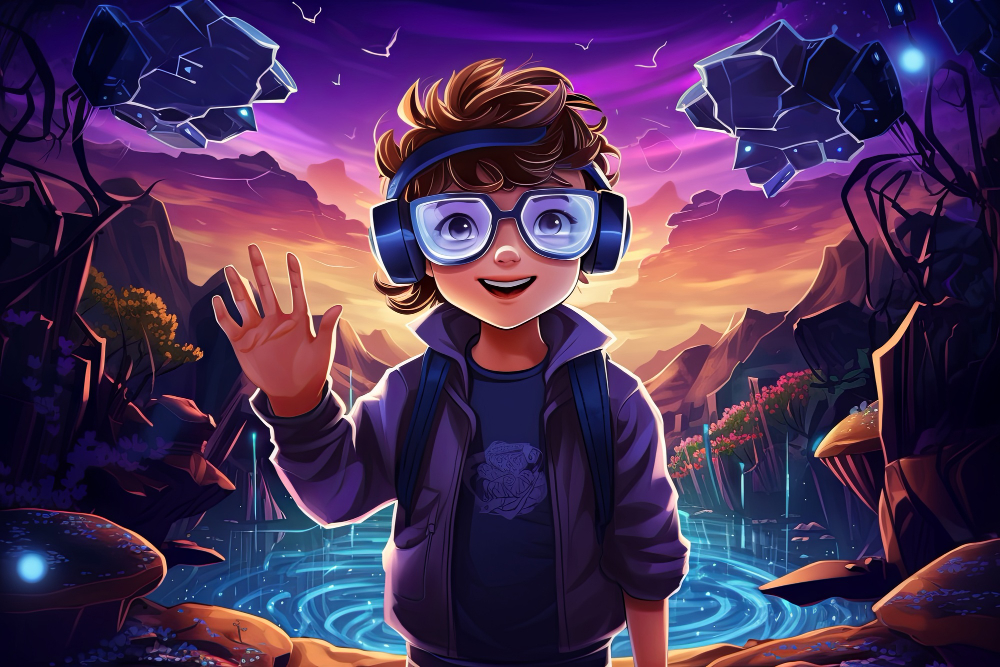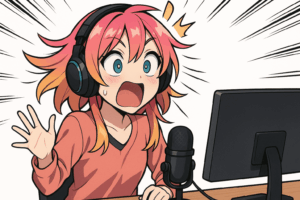In today’s digital age, transforming a still image or simple 2D image to 3D model has become incredibly accessible. This process, which once required extensive technical expertise, can now be accomplished with just a few clicks, thanks to advancements in technology. Whether you are a hobbyist, designer, or engineer, creating detailed 3D models from flat images is easier and more efficient than ever before.
Understanding the Basics of 2D Image to 3D Model Transformation
What 2D Images and 3D Models Are?
A 2D image or photograph is a flat representation of a scene or object, with only height and width. Examples include photographs, drawings, and screenshots. In contrast, a 3D model or picture is a digital representation of an object in three dimensions, encompassing height, width, and depth. 3D models and pictures can be rotated, scaled, and viewed from different angles, providing a more realistic representation of the object.
The Significance of Converting Flat Images into 3D Models
Converting flat images into 3D models is significant because it enhances the visualization and interaction capabilities of the images. This image conversion allows for better analysis, simulation, and presentation of objects, making it invaluable in fields such as design, education, and virtual reality. By transforming flat images into 3D models, users can explore the depth and structure of real-world objects in a more immersive way.
How Real-World Objects Can Be Represented in 3D from 2D Photos?
Real-world objects can be represented in 3D from 2D photos through a process called photogrammetry or using AI-driven algorithms. Photogrammetry involves taking multiple, 2D to 3d photos of an object from different angles and using software to stitch these 2d to 3d images into 3d together to create a 3D model. AI-driven algorithms, on the other hand, analyze the 2D image, recognize patterns, and generate a 3D model with intricate details. Both methods allow users to convert 2D images into lifelike 3D models that accurately represent the original objects.
Importance of 3D Modeling in Various Industries
3D modeling plays a crucial role in various industries, including animation, gaming, industrial design, and medical imaging. For instance, architects can create detailed models of buildings, while medical professionals can use 3D models for better diagnostics and treatment planning. The ability to convert 2D image to 3D model opens up endless possibilities for innovation and creativity across these fields.
The Process: Transforming 2D Image to 3D Model with Just a Few Clicks
Step-by-Step Guide on Converting 2D Images to 3D Models
Uploading Flat Images
The first step in transforming a 2D image to a 3D model is to upload or download the flat image into the chosen software. Ensure the image you upload is clear and captures all necessary details of the object you wish to transform and model.
Using a User-Friendly Interface
Select a software tool with a user-friendly interface to simplify the process. Many modern tools to convert them are designed to be intuitive, allowing even beginners to navigate through the conversion steps easily. These interfaces typically offer drag-and-drop functionality, guided workflows, and real-time previews.
Intricate Details Captured by the AI Model
Once the image of an AI model is uploaded online, the software uses AI algorithms to analyze the image and capture intricate details. This step involves detecting edges, recognizing patterns, and constructing the depth information needed to create a realistic 3D model.
Importance of Resolution and Scale in the Transformation Process
The resolution and scale of the 2D image play a critical role in the quality of generating the 3D model. Higher-resolution images provide more detail, resulting in more accurate and detailed 3D models. Proper scaling ensures that the dimensions of the 3D model are proportional to the real-world object, which is essential for applications like 3D printing and simulation.
Tools and Software Available for the Conversion
Several tools and software options are available for converting 2D images to 3D models, each with unique features and capabilities. Some popular options include:
- Blender: A powerful, free, open-source tool that offers extensive features for 3D modeling and animation.
- Autodesk ReCap: A professional tool designed for creating 3D models from photos and scans, known for its precision and advanced features.
- Meshroom: A free, open-source photogrammetry software that automatically converts multiple 2D images into 3D models.
Features of User-Friendly Interface in 2D Image to 3D Model Tools
Different Software Options for 2D to 3D Conversion
There are numerous different software and options available for converting 2D images to 3D models, each offering unique features and capabilities. Some popular tools include:
- Blender: An open-source, free software known for its comprehensive features and powerful tools for 3D modeling, animation, and rendering.
- Autodesk ReCap: A professional-grade software designed for creating high-precision 3D models from photos and scans, ideal for industrial applications.
- 3DAiLY: 3DAiLY specializes in AI-generated 3D models, providing characters, props, and game assets powered by My3dMeta’s advanced AI technology.
- Tinkercad: A browser-based, free tool from Autodesk that is beginner-friendly and suitable for simple 3D modeling projects.
Key Features to Look For
User-Friendly Interface
- Intuitive navigation and easy-to-use tools
- Drag-and-drop functionality
- Real-time previews of the 3D model
- Guided workflows that simplify the conversion process
Free vs. Paid Features
When selecting software, it’s essential to weigh the benefits of both free and paid features. Free options typically offer fundamental tools like image uploading, basic editing capabilities, and the ability to export files in standard formats. On the other hand, paid software often provides access to more advanced functionalities. These may include high-resolution output, extensive libraries of textures and models, and professional-grade fine-tuning options. Depending on your specific needs and budget, finding the right balance between free and paid features can enhance your overall experience and productivity in 3D modeling endeavors.
Support for Various File Formats
- STL Files: Widely used for 3D printing.
- PNG/JPEG: Commonly used for input images.
- OBJ/FBX: Useful for exporting models to different 3D software for further editing, programming, or animation.
Fine Tuning and Customization Options
- Detail Adjustment: Tools to adjust the level of detail and smoothness of the 3D model.
- Texture Mapping: Options to apply and edit textures to enhance realism.
- Lighting and Shading: Tools to simulate different lighting conditions and shading effects.
- Scaling and Sizing: Precise controls for adjusting the scale and dimensions of the model to match real-world objects.
Real-World Applications of 2D Image to 3D Model Technology
How 3D Models Are Used in the Real World?
3D Printing
3D printing transforms digital models into physical objects. Applications include:
- Prototyping: Rapid production of prototypes for testing and development.
- Manufacturing: Creating custom parts and tools for various industries.
- Art and Design: Producing intricate sculptures and design pieces.
Animation and Gaming
3D models are fundamental in creating lifelike characters and environments:
- Animation: Developing characters and scenes for movies and TV shows.
- Gaming: Building immersive worlds and interactive elements in video games.
Industrial Design and Prototyping
3D modeling aids in designing and refining products:
- Product Design: Visualizing and iterating product designs before manufacturing.
- Prototyping: Creating functional prototypes to test form, fit, and function.
Medical Imaging and Virtual Reality
3D models are revolutionizing life: healthcare and virtual experiences:
- Medical Imaging: Converting medical scans into 3D models for better diagnosis and surgical planning.
- Virtual Reality: Developing realistic VR environments for training, simulation, and entertainment.
Tips for Beginners on Converting Flat Images to 3D Models
Best Practices for Capturing 2D Images Suitable for Conversion
- Lighting: Ensure even lighting to avoid shadows and highlights that can distort the model.
- Angles: Capture multiple angles of the object to provide comprehensive data for the 3D model.
- Resolution: Use high-resolution images to capture intricate details.
Tips on Using Software for Beginners
- Start Simple: Begin with basic shapes and gradually move to more complex models.
- Use Tutorials: Take advantage of online tutorials and forums to learn best practices and tips.
- Experiment: Try different settings and tools to understand their impact on the final model.
Common Mistakes to Avoid
- Ignoring Lighting: Poor lighting can result in inaccurate models. Ensure proper lighting conditions.
- Low Resolution: Using low-resolution photos can lead to a loss of detail and quality.
- Overcomplicating: Avoid starting with overly complex models. Master basic techniques first.
By following these tips and understanding the features and applications of 2D to 3D conversion tool tools, beginners can effectively convert and create high-quality 3D models from flat pictures.
Advanced Techniques and Fine-Tuning for 2D Image to 3D Model Conversion
To achieve high-quality 3D models, advanced settings and techniques are essential. Fine-tuning allows one program to call for precision in details, adjusting parameters like resolution and smoothing to enhance the model. Experimenting with different textures can add realism, making the models more lifelike. Utilizing AI models can significantly improve the process by capturing intricate details that manual methods might miss. AI-driven tools analyze and refine the model, ensuring accuracy and depth. By focusing on these advanced techniques, users can elevate the quality of their 3D models from basic to professional standards.
Sharing and Saving Your 3D Models from 2D Images
Saving and sharing your 3D models efficiently for the next stage is crucial for collaboration and further use. Once the model is complete, save and download it in formats like STL files, which are ideal for 3D printing. Exporting these files ensures compatibility with various applications. Creating a shareable link makes it easy to distribute your models online, whether for review or sharing with a community. Many websites and platforms support 3D model sharing, allowing users to showcase their work and get feedback. This streamlined upload process enhances accessibility and enables collaboration within the 3D modeling community.
Conclusion
The journey from 2D images to 3D models has opened new realms of creativity and innovation. Through user-friendly interfaces and advanced AI technology, flat images are transformed into dynamic, lifelike models, breathing life into virtual worlds. The future of 3D modeling technology promises even greater possibilities for design, simulation, and beyond. To breathe life into your 3D modeling adventure, explore 3DAiLY, and read an article to frame more information. Create an account today and import your images to begin framing your ideas into reality on our website.



